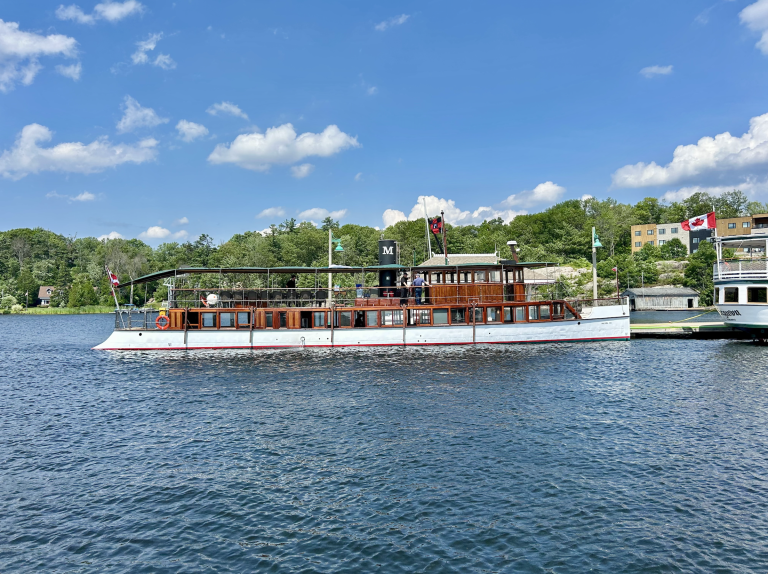Understanding Naval Vessel Protection Zones
Have you ever wondered what the minimum distance between a U.S. naval vessel and your vessel should be? The answer is simple: Respect the Naval Vessel Protection Zones.
The Naval Vessel Protection Zone is a 500-yard regulated area around large U.S. naval vessels, which is vital for their safety and security.
Here are the fundamental rules you need to follow:
- Stay at least 100 yards away from a naval vessel at all times.
- Slow down to your minimum speed if you’re within 500 yards of the ship.
- If you need to get closer for safe passage, get authorization from the official patrol.
Why these rules?
These measures help prevent accidents and ensure the security of naval operations. By keeping your distance, you help the U.S. Coast Guard (USCG) and other authorities maintain control and safety on the water.
Where do these zones apply?
Naval Vessel Protection Zones apply to the United States’ navigable waters, which means any waterway used for transport or trade, including rivers, lakes, and coastal areas.
Security vs. Restricted Areas
There’s a difference between a protection zone and a restricted area. While a protection zone is for keeping a safe distance, a restricted area might have more stringent rules and limited access.
Quick Checklist:
- 100 yards: Minimum safe distance
- 500 yards: Slow down to minimum speed
- Navigable waters: Where these zones are enforced
Navigating around U.S. Naval Vessels

Knowing the minimum distance you must maintain, the consequences of violations, and the role of official patrols is important when navigating near U.S. naval vessels. This ensures safety and compliance with regulations.
Minimum Distance Regulations
You must keep a distance of at least 500 yards from any U.S. naval vessel. Within these 500 yards, operate at the minimum speed necessary for safe navigation.
If you must approach within 100 yards, you must first get permission from the naval vessel’s Commanding Officer. These distances help prevent collisions and ensure security for civilian boats and military ships.
Violation Consequences
Violating these regulations is serious and classified as a felony offense. You could face up to six years in prison and fines of up to $250,000. Such penalties underscore the importance of respecting naval protection zones.
Law enforcement officials take these regulations seriously to maintain safety and order in U.S. waterways. Ignoring these rules can result in severe legal and financial consequences.
Official Patrol and Enforcement
Official patrols oversee the enforcement of these regulations. They have the authority to direct you on how to pass safely. These patrols might include Coast Guard officials or other designated law enforcement agencies.
They ensure you follow the regulations and provide instructions to prevent any potential threat to naval vessels. Always comply with their directions to navigate safely and avoid penalties.
Safety Protocols for Vessels
When navigating near U.S. naval vessels, following strict safety protocols is essential. This includes maintaining proper distances, following navigation rules, and using effective communication methods.
Navigation Rules and Right-of-Way
You must keep at least 100 yards away from U.S. naval vessels. If you are within 500 yards, travel at the minimum speed necessary to maintain a safe course. The big rule here is to avoid sudden movements that might be seen as a threat.
Right-of-way is crucial. Naval vessels usually have the right-of-way. If you are unsure about your position relative to a naval ship, it’s best to slow down and let them pass.
Always follow the Navigation Rules, International-Inland, which are like the traffic laws of the sea. They guide everything from who has the right-of-way to what signals to use in different situations. These rules help prevent accidents and keep everyone safe.
Communicating with Naval Vessels
Effective communication is key when you’re near a U.S. naval vessel. Use VHF-FM Channel 16 to contact the Coast Guard or the naval vessel for instructions. This channel is constantly monitored for safety and emergency calls.
If you’re within the 500-yard zone, you must contact the official patrol. This could be a Coast Guard officer or someone designated by the naval vessel’s commanding officer. They will guide you on how to proceed safely.
Always have a working radio and know how to operate it. Misunderstandings can lead to unsafe situations. So, clear and concise communication helps ensure everyone’s safety.
Anchoring and Mooring near U.S. Naval Vessels

Safety and security are top priorities when anchoring and mooring near U.S. naval vessels. Here’s what you need to know about designated anchorage areas and the precautions you must take.
Designated Anchorage Areas
When anchoring near U.S. naval vessels, you must use designated anchorage areas. These areas are chosen specifically to keep both military and civilian vessels safe from harm. Keep an eye out for signs and instructions from the Coast Guard, especially around large naval ships.
Precautions While Anchored or Moored
Once you’ve found a designated anchorage area, it’s important to stay vigilant. Always maintain a minimum distance of 500 yards from any large naval vessel. This buffer zone helps prevent accidents and security breaches. If you have any questions, follow the instructions from the commanding officer or the official patrol.
Turn off your electronics and stay quiet to avoid drawing unnecessary attention. Be prepared to move if asked by naval authorities. They may need the space for operations, and keeping clear is essential for everyone’s safety.
Operating in Commercial and Recreational Waterways
Shared Waterways with Commercial Vessels
Commercial vessels are large and can be challenging to navigate around. You should always maintain a safe distance. Keep at least 100 yards away from these ships.
It’s crucial to keep a lookout for large ships in a busy channel or port. They often have the right of way, and changing direction or stopping quickly can be hard. Use your marine radio to stay informed.
If you’re near a commercial port, follow marina security guidelines. They may have special lanes for recreational boaters and specific times when access is limited. Commercial port operations can be very structured, so knowing the rules can help you navigate safely.
Recreational Boating Considerations
While enjoying recreational boating, remember that safety comes first. If you see a U.S. naval vessel, do not approach within 100 yards. Slow down to the minimum speed within 500 yards to avoid interference with military operations.
Always carry proper identification and boating documentation. Law enforcement may conduct random inspections. In these cases, compliance with federal laws ensures a smooth process.
Educate yourself about local waterways—for instance, where popular routes or hidden hazards might be. A good boater knows how to plan a trip without putting themselves or others in danger. It’s not just about fun; it’s about being responsible and aware of your surroundings.
Preparation and Prevention Tactics
To safely navigate near U.S. naval vessels, it’s crucial to focus on vessel safety equipment and proactive communication. These measures will help avoid accidents and ensure compliance with regulations.
Vessel Safety Equipment
You need to ensure your boat is equipped with essential safety tools. Every person on board should always wear a life jacket. They are vital for keeping everyone safe on the water.
Fire extinguishers are another must-have. They can be a lifesaver if a fire breaks out. Make sure they are easily accessible.
Don’t forget visual distress signals. These include flares and signal flags and are necessary to alert others in an emergency.
Complying with these equipment requirements is about more than following the law; it’s about ensuring everyone’s safety.
Regional Considerations for Naval Interactions

Different regions have specific rules for interacting with U.S. naval vessels. Understanding these can keep you safe and help you avoid penalties.
Differences in the Atlantic and Pacific Areas
Atlantic Area: In the Atlantic, naval vessels frequently travel near densely populated coastlines. This means there can be more local authorities patrolling and enforcing rules.
The waters can be busy, with many recreational boats and commercial ships. You need to know the 500-yard safety zone around naval vessels.
Pacific Area: The Pacific Area, managed by the U.S. Coast Guard Pacific Area, covers vast stretches of ocean with fewer ports and cities than the Atlantic.
Despite the larger area, you must keep a 500-yard distance like in the Atlantic. The Seventeenth U.S. Coast Guard District, which operates here, is vigilant, especially given the area’s significance for national security and international trade.
Local and Regional Enforcement Differences
Local Authorities: In both regions, local and regional authorities play key roles. They may establish additional safety zones or patrols around naval vessels.
For instance, cities with large naval bases, like Norfolk in the Atlantic, have more frequent coast guard patrols than less busy areas.
Regional Variations: Enforcement can vary by region. In some areas, authorities might be stricter due to higher traffic or security risks.
For example, near important military installations, you could face more rigorous checks and immediate responses to violations.
Always follow navigation rules and be aware of specific local regulations to avoid hefty fines or imprisonment.
Frequently Asked Questions
Understanding the rules when navigating near U.S. naval vessels is essential for safety and compliance. Below are answers to some common questions.
Operators must slow to what speed when they are within a certain range of a U.S. naval vessel?
You must slow to a minimum speed within 500 yards of a U.S. naval vessel. This helps to ensure safety and prevent any potential conflicts or accidents.
What actions should vessel operators take near a U.S. naval vessel?
When you are near a U.S. naval vessel, you should follow all instructions from the Commanding Officer or the official patrol.
Always operate at a minimum speed within 500 yards and maintain a distance of at least 100 yards.
How close can a civilian boat come to a military or naval vessel before needing to alter course?
Civilian boats should not approach closer than 100 yards to a U.S. naval vessel. If you are within this range, you should immediately adjust your course to increase the distance.
What are the safety considerations to keep in mind when boating near U.S. naval ships?
When boating near U.S. naval ships, always be alert and aware of your surroundings.
Keep your distance, follow speed regulations, and listen to naval personnel’s instructions. Violations can result in severe penalties.
In what scenarios is a vessel required to adjust speed or course due to the presence of naval vessels?
You must adjust your speed and course if you are within 500 yards of a naval vessel.
Within this range, slow to a minimum speed and follow any directions the naval personnel gave. Within 100 yards, you should not approach and must change your course.
What guidelines must be followed by boats near U.S. naval vessels?
Boaters must follow these guidelines:
- Do not approach within 100 yards of naval vessels.
- Boats should slow to the minimum speed within 500 yards.
- Boaters must follow all directions from the Commanding Officer or official patrol.
- Be aware that violations can result in prison time and heavy fines.







